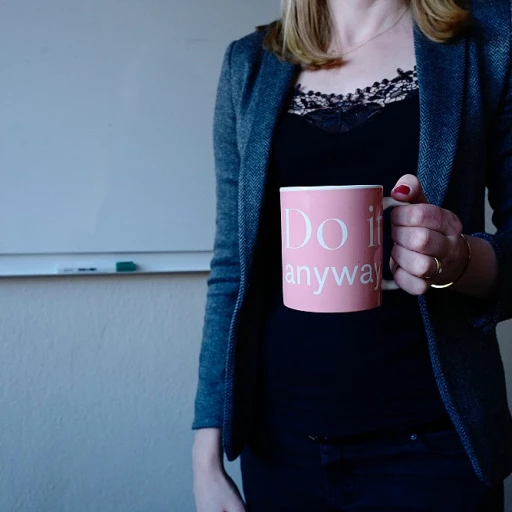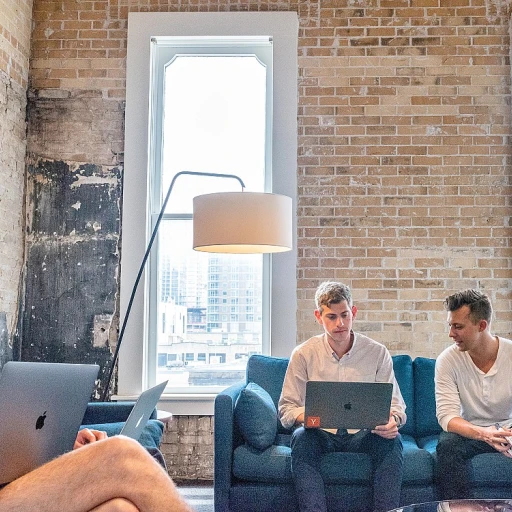Understanding the Importance of Follow-Up
Why A Follow-Up Matters
Have you ever thought about what happens after you leave that interview room? Believe it or not, following up can make or break your chances of landing the job. It's like sending a thank-you note after a party; it shows your appreciation and keeps you on the hiring manager's radar.
Interviews can often be overwhelming, especially when you're competing against numerous well-qualified candidates.But sending a follow-up email can help you stand out. It's not just a good gesture but a part of the hiring process most recruiters expect. According to The Balance Careers, this simple act could be what sets you apart: source.
Think about it as a chance to reinstate your enthusiasm for the company and refresh them about your skills and qualifications. You likely left a good impression during the interview, but a well-timed follow-up can reinforce it. As you proceed with your job search, it’s beneficial to acknowledge this as an important step in the process.
But don't get too eager. Timing is everything, and there's an art to knowing when and how often to reach out, which we'll dive into later. For now, remember that a thoughtful follow-up email lets the interviewer know you're serious about the position and shows the courtesy you'd bring as a future employee.
Timing Your Follow-Up: When and How Often
Timing is Everything: When to Send Your Follow-Up
After an interview, timing your follow-up is just as crucial as crafting the perfect email. Striking while the iron is hot shows enthusiasm, but patience is a virtue too. Let’s explore the sweet spot for sending your follow-up message. The general rule of thumb? Send a thank-you email within 24 hours of your interview. This keeps you fresh in the interviewer's mind, showing your eagerness for the role. If it’s a Monday interview, don’t let it simmer until Friday. By that time, the company might have already moved on with their hiring process. Sending a follow-up email too soon might give the impression of desperation, while waiting too long can make you seem uninterested. It’s all about balance, showing that perfect blend of interest without overreaching. Use your judgement to gauge the company’s tempo after meeting their hiring manager.Making Your Follow-Up Count: How Often to Check In
But what if the silence from their side feels deafening? You fired off your first follow-up and nothing. Should you send a second one? Here's the scoop: give it a week before gently nudging them again. If you've had a phone interview or face-to-face meeting where you clicked with the recruiter, don’t hesitate to mention that connection in your follow-up email. This personal touch can refresh their memory and reignite your application in their hiring process. Once a week for two or three weeks is a reasonable frequency for your follow-up emails. Persisting beyond that might seem overzealous and could risk annoying the person who could be your future boss. Remember, each company operates on different timelines. The job search game requires a little patience and an understanding that not all processes work at lightning speed. Sources:- "The Do's and Don'ts of Follow-Up Emails After Interviews", Indeed, accessed October 2023.
- "Sending a Second Follow-Up Email After an Interview", The Balance Careers, accessed October 2023.
Crafting the Perfect Follow-Up Email
Nailing Your Follow-Up Email
What to Include in Your Follow-Up Message
Creating a Follow-Up Email That Stands Out
In the hustle of a job search, sending a standout follow-up email after an interview is a golden opportunity. It not only shows your eagerness but also reinforces your interest and qualifications for the position. Crafting the perfect follow-up isn't rocket science, but it does require some thought. Firstly, personalize your email by addressing it directly to the person who interviewed you. This might have been the hiring manager or another company representative. Using their name adds a personal touch and shows you paid attention during your time with the company. Your subject line matters, too. Keep it professional but friendly. Something simple like "Thank You for the Interview" or "Following Up on Our Conversation" does the trick. Make sure your name and the job title you're discussing are clear. This helps the recruiter quickly identify the purpose of your follow-up. Now, into the body of the email. Express gratitude for the opportunity to interview for the position. Mentioning specific discussions or points covered during the interview can make your email more memorable. This not only shows that you were engaged but also reinforces points in your favor.Elements to Remember When Writing
- Be Concise: Respect the interviewer's time by keeping your follow email brief but informative. Several well-written lines will do better than paragraphs of text.
- Re-emphasize Your Interest: Clearly state your enthusiasm about the position and the company's mission.
- Highlight Your Fit: Briefly touch on why you believe you are the best fit, reminding them of your strengths discussed in the interview process.
- Include Your Contact Details: Ensure the interviewer knows how to get in touch, should they wish to follow up with you.
- Professional Closing: Conclude with a simple "Thank You" or "Looking Forward to Hearing From You," followed by your name.
Handling No Response: What to Do Next
Handling Silence: Your Game Plan
Silence after an interview gives you more than just extra time to binge your favorite shows. The waiting period can stir a storm of anxiety or make you second-guess the moves you made. However, don’t let the lack of communication get the best of you. Instead, put a smart plan into action. First things first, patience is key. Interview processes aren't always a straight path; sometimes there's a snag or two in the hiring process. The company might be juggling multiple candidates or hit a hiccup elsewhere in decision-making. Don't sweat it right away. Give it some ample time—usually about a week or two after your initial follow-up email. However, if you still hear nothing, it’s okay to send another nudge: a second follow-up email. Just keep it short and polite. Think of it as a gentle "still here and still interested" reminder.- Keep Your Tone Professional: It’s easy to let emotions slip in when you're waiting. Keep your tone cool and collected.
- Reiterate Interest: Refresh the interviewer’s memory of your enthusiasm for the position and the company.
- Avoid Pressure: Don’t come across as impatient. Instead, express understanding of their time constraints.
Common Mistakes to Avoid in Follow-Ups
Missteps That Can Hurt Your Follow-Up
You've aced the interview, and now it's time to follow up. But hold on! There are some common pitfalls that can trip you up if you're not careful. Let's look at these missteps so you can avoid them and keep your job search on track.
Overloading with Emails
One of the biggest mistakes is bombarding the recruiter or hiring manager with too many emails. It's tempting to send multiple messages if you don't hear back immediately, but patience is key. Sending too many follow emails can come off as desperate or pushy. Stick to a well-timed follow-up schedule as discussed earlier, and give the company time to respond.
Forgetting to Personalize
Sending a generic follow-up email is another blunder. Remember, the interviewer took time out of their day to meet with you, so make sure your follow-up reflects that. Mention specific points from the interview or highlight a shared interest. Personalizing your message shows genuine interest in the position and the company.
Neglecting to Proofread
Typos and grammatical errors can undermine your professionalism. Before you hit send, take a moment to proofread your email. A clean, error-free message reflects well on you and reinforces your attention to detail. Tools like Grammarly or Hemingway can help catch mistakes you might overlook.
Being Too Vague
Your follow-up email should have a clear purpose. Avoid vague statements that don't add value. Instead, reiterate your enthusiasm for the job title and the company. Mention any additional information or questions you have about the interview process. This shows you're proactive and engaged.
Ignoring the Subject Line
The subject line is your first impression. If it's unclear or missing, your email might get lost in the shuffle. Make sure it’s concise and relevant, like "Thank You for the Interview" or "Follow-Up on Interview for [Job Title]." This helps the hiring manager quickly identify your email.
Assuming No Response Means Rejection
Silence doesn't always mean a "no." The hiring process can be lengthy and complex. If you don't hear back, it's okay to send a second follow-up after a reasonable time. This shows persistence and continued interest without crossing the line into annoyance.
By steering clear of these common mistakes, you'll enhance your follow-up strategy and make a lasting impression on the interviewer. Remember, the goal is to keep the conversation going and position yourself as the best fit for the job.
Sources: Forbes, Harvard Business Review








